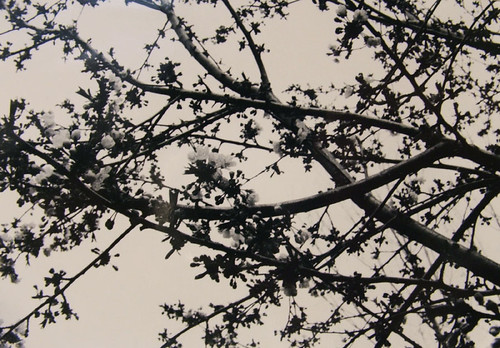OK, all of you intrepid knitters. My creativity has been all used up, so I’m opening this up for your help. I need a name for this Camisole. As you may recall (or have noticed) I don’t like to name my patterns with female names. It honestly drives me crazy, but that’s another subject for another day. But here’s the finished camisole.



Pattern: My own design, to be published in Winter 2008 in a book edited by Yahaira and titled Sensual Knits. It’s got a sweetheart neckline and a low back, with a delicate and simple lace edging worked on perpendicular to the body.
Yarn: 4 skeins of a to be revealed Superwash Merino Wool
Needles: 3.5 mm (US 4) 24″ circular
Verdict: This yarn was really soft and lovely. I had originally planned to do a lace pattern on the body, but the yarn’s texture was competing with the lace, so I went with a plain stockinette body. It’s a 2 ply fingering weight (but fluffy), merino wool, and worked on a larger needle it drapes BEAUTIFULLY! I swatched on a 3 and a 4 and I thought I’d like the 3 better at first, but I washed it and the 4 was perfect. Lovely hand and since the yarn bloomed a bit, it didn’t seem too open. The raw edges have a sort of built in i-cord to them, so that they are soft against the skin and make a nice sturdy edge that doesn’t compete with the drape of the fabric. The finished cami is lightweight and elegant. I’m really pleased with it and I think it will be a great addition to the book.
So… what do you think? Got a name?
Also, since Scout asked:

It is the Chinese character for Peace. There are actually 2 characters for peace (or at least a professor from China advised me), one is like world peace, absence of war. That’s the other one. This one is more inner peace, a sort of harmony and oneness.
It’s on my left shoulder (I took this shot in the mirror, but flipped it for accuracy). And I put it there for very specific reasons. My greatest life goal is to be at peace with myself. To make myself into someone that I am comfortable with, someone I am not critical of. Someone who is at peace with the world around her, and with where she is in life. But I put it on my left shoulder where I couldn’t see it and could hardly touch it, because the nature of the peace I want means that it will (and should) always be just out of reach and out of sight. It should always be there as a goal, but always unattainable. We should always be able to better ourselves and make our world better. Clearly, I thought a lot about it 🙂
So just a reminder, please give me name suggestions! I’ll make a prize of it. If I pick your name for the camisole, you get a prize. I’ll put some cool yarn in there as well as some soap from Blessed Juno and a pattern if you want it. OK? Get cracking!
M

















